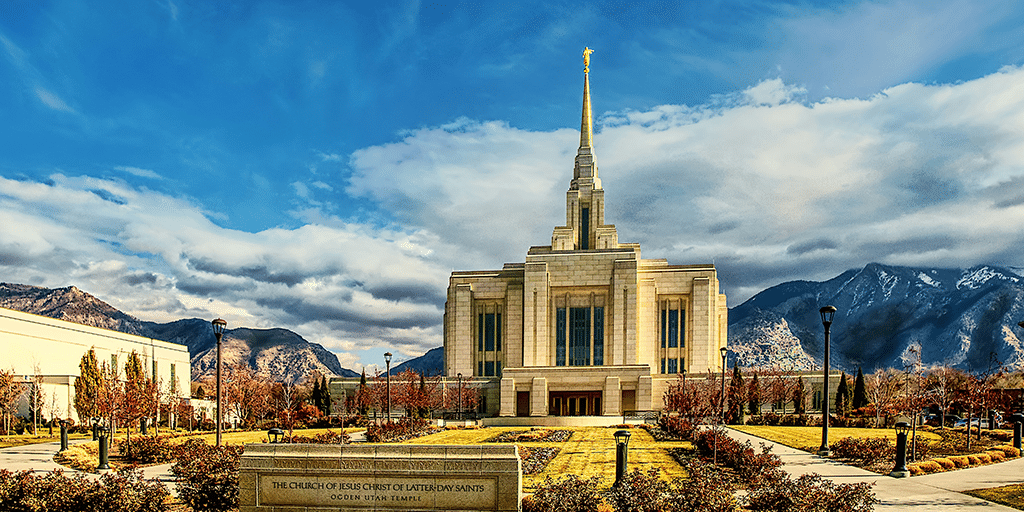Gethsemane and Christ’s Blood in LDS References

| By: Sandra Tanner; ©2012 |
| The LDS Church claims that Jesus suffered for our sins mainly in Gethsemane, thus minimizing the importance of the cross. |
The LDS Church claims that Jesus suffered for our sins mainly in Gethsemane, thus minimizing the importance of the cross. In the Encyclopedia of Mormonism, under the heading of GETHSEMANE, we read:
- … For Latter-day Saints, Gethsemane was the scene of Jesus’ greatest agony, even surpassing that which he suffered on the cross, an understanding supported by Mark’s description of Jesus’ experience (Mark 14:33-39).
- … The evidence for Jesus’ extreme agony in Gethsemane is buttressed by a prophecy in the Book of Mormon and a statement by the resurrected Savior recorded in the Doctrine and Covenants. About 125 B.C., a Book of Mormon king, Benjamin, recounted in an important address a prophecy of the coming messiah spoken to him by an angel during the previous night. Concerning the Messiah’s mortal experience, the angel declared that “he shall suffer temptations, and pain of body, hunger, thirst, and fatigue, even more than man can suffer, except it be unto death; for behold, blood cometh from every pore, so great shall be his anguish for the wickedness and the abominations of his people” (Mosiah 3:7). The Doctrine and Covenants gives the following poignant words of the resurrected Jesus: “Behold, I, God, have suffered these things for all, that they might not suffer if they would repent; …which suffering caused myself, even God, the greatest of all, to tremble because of pain, and to bleed at every pore, and to suffer both body and spirit” (D&C 19:16, 18).
- Modern LDS leaders have emphasized that Jesus’ most challenging experience came in Gethsemane. Speaking in a general conference of the Church in 1982, Marion G. Romney, a member of the First Presidency, observed that Jesus suffered “the pains of all men, which he did, principally, in Gethsemane, the scene of his great agony” (Ensign 12 [May 1982]:6). Church President Ezra Taft Benson wrote that “it was in Gethsemane that Jesus took on Himself the sins of the world, in Gethsemane that His pain was equivalent to the cumulative burden of all men, in Gethsemane that He descended below all things so that all could repent and come to Him” (Benson, p. 7). (Encyclopedia of Mormonism, edited by Daniel H. Ludlow, New York: Macmillan Publishing Company, 1992, p. 542)
LDS Apostle Bruce R. McConkie wrote:
- Forgiveness is available because of the atoning sacrifice of the Great Jehovah. Forgiveness is available because Christ the Lord sweat great drops of blood in Gethsemane as he bore the incalculable weight of the sins of all who ever had or ever would repent. Forgiveness is available because “God suffereth according to the flesh that he might take upon him the sins of his people, that he might blot out their transgressions according to the power of his deliverance.” (Alma 7:13.) (The Promised Messiah: The First Coming of Christ, p. 337, Deseret Book, 1978.)
However, Christians view Christ’s suffering in Gethsemane as part of his struggle to be “obedient unto death” (Phi. 2:8), not as atonement for our sins. The Bible points to the cross as the place where Jesus atoned for our sins.
- Heb. 12:2 — Looking unto Jesus the author and finisher of our faith; who for the joy that was set before him endured the cross, despising the shame, and is set down at the right hand of the throne of God.
- Col. 1:20 — And, having made peace through the blood of his cross, by him to reconcile all things unto himself; by him, I say, whether they be things in earth, or things in heaven.
- Col. 2:13-14 — And you, being dead in your sins and the uncircumcision of your flesh, hath he quickened together with him, having forgiven you all trespasses; Blotting out the handwriting of ordinances that was against us, which was contrary to us, and took it out of the way, nailing it to his cross;
- 1 Cor. 1:18 — For the preaching of the cross is to them that perish foolishness; but unto us which are saved it is the power of God.
Thus we see that the Bible emphasizes the cross, not Gethsemane. Romans 5:10 explains that “when we were enemies, we were reconciled to God by the death of his Son.” Paul also stated: “God forbid that I should glory, save in the cross of our Lord Jesus Christ, by whom the world is crucified unto me, and I unto the world.” (Gal. 6:14)
Sandra Tanner is the great-great granddaughter of Brigham Young, second president of the LDS Church. As a teenager, she was challenged on the truth claims on Mormonism, which eventually led Sandra and her husband on a quest for truth. This led her to leave the LDS Church and embrace evangelical Christianity. Together, Jerald and Sandra started and led a ministry to help other Mormons investigate their faith and embrace the Bible’s teachings. Sandra has published numerous books and appeared on many media programs on this topic. Find out more at Utah Lighthouse Ministry






